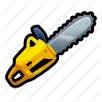10 Tips to Improve Concrete Mixing
Concrete mixers are usually associated with time and labour-intensive jobs. These tools are usually found in dusty construction sites, with enormous piles of building materials and individuals in hard hats scurrying about.
But even simple tasks may benefit from the use of a concrete mixer. Whether you need to pave a little driveway or expand your residence, getting a concrete mixer can surely accelerate the construction process. Individuals no longer have to devote a good deal of energy and time to mixing concrete. Even small, simple tasks can benefit from using mixers.
Whether you are a newcomer to cement or an experienced construction professional, understanding a few of the methods of using a mixer can perform a great deal in fostering your productivity and efficiency in the worksite.
1. Prep the worksite
The very first thing you should do is to prepare the worksite for concrete pouring. Nearly all the work includes manual tasks such as positioning the pour, cordoning it off, and pounding the floor to a level grade. Apply for your requisite licenses prior to starting the job.
2. Wear appropriate safety equipment
Make sure that you and other workers wear personal protective equipment before working on the cement mixer. Standard safety equipment includes a respirator, goggles, work gloves, and boots. The respirator and the gloves are especially important since powdered concrete is noxious and the dust can burn your eyes and hands.
3. Keep it shut
Concrete hardens right away, so be sure you put the mixer as near to the work site as you can. Shorter travel times means simpler transportation, more trips at shorter intervals, and less fatigue from the heavy load.
4. Inspect the mixer
Inspect carefully the mixer’s parts before it is switched on, during usage, and as soon as it is shut down. Make sure the mixer blades aren’t bent. A quick check can save you a lot of money and time in the future.
5. Coat the surface
Apply a thin coating of industrial oil on the exterior of the mixer to prevent cement collecting and hardening on the surface. You may also add a light coat of fuel in the drum before mixing.
This keeps the cement from sticking to the surface of the interior. However, use diesel since regular petrol changes the concrete mix, changing its consistency.
6. Position on stable floor
Position the concrete mixer onto a stable, horizontal surface, as opposed to irregular or sloping ground. Even if the surface is coated, make sure to put a rigid hardboard or something similar under the mixer to guarantee stability and to avoid accidental spillage.
7. Keep the engine clean
Concrete mixers should only be used outdoors, and all the dust flying around can get to the mixer’s engine. Use an air compressor to dislodge dust and cement that might have accumulated in the motor.
A clean motor works optimally and efficiently. Moreover, you spend less on costly repairs.
8. Grease the gears
All that turning and mixing wet cement inside the drum will wear the gears and pulleys down. Regularly grease the gears, pulleys and other moving joints to counteract the stress caused by friction. Not only will your mixer’s lifespan become longer, but its functionality will remain at the best level.
9. Drain the drum
Immediately drain the drum of concrete after it stops turning. You should not wait until the last time to pour out the concrete, or it might harden and be impossible to get rid of. Don’t use the drum to keep mixed concrete.
10. Wash the mixer after use
Gently wash out the cement mixer after use. This is a safe and cheap method of washing out the mixer and does not involve using abrasive chemicals.
Leave a mix of two scoops of gravel combined with three gallons of water for 15 to 25 minutes to ensure the best outcome. Don’t forget to fix the drum angle to ensure all of nooks and crannies are attained.
